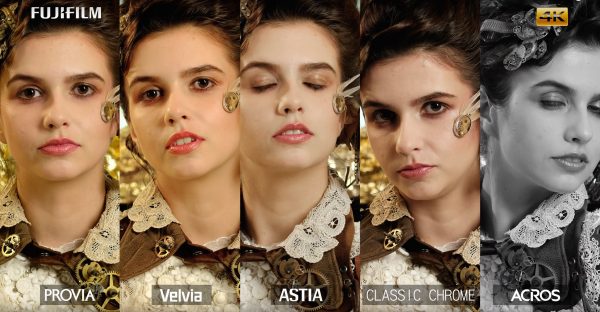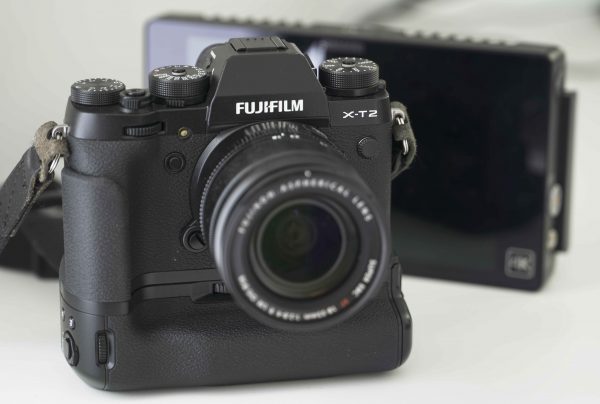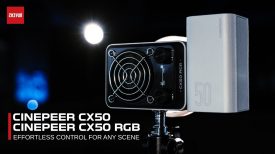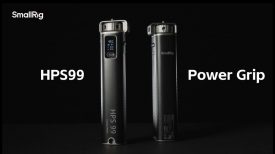The conventional wisdom is that in order to make your footage look filmic you need to shoot flat, Log, or Raw and then post process it. You can use any number of lookup tables (LUTs) in your editing software, use presets in tools like Davinci Resolve and Filmconvert, or simply bake your own.
Fujifilm are of course one of the World’s two iconic makers of film stock. They know a thing or two about colour. With their new X-T2 you can opt to bake-in a film emulation right in the camera, no more flat profiles, no more messing around in post.

Of course by doing this you lose most of the ability to correct or tinker with the image afterwards in post. Details that might otherwise have existed in the shadows or highlights will be gone forever. Complicated post processing just won’t look as good. On the plus side exposure is easier to gauge and turning your footage around becomes instant – a bit like the good old days. Shooting this way is pretty much a case of ‘what you see is what you get’.

But just how good can this look? we have already taken a first look at the X-T2 but weren’t allowed to publish any video from it. In some countries the camera is now shipping, but I’ve not managed to buy one here in the UK yet. Luckily Fujifilm themselves have published a short video that at least gives us some idea of what can really be achieved.
Takayuki Yagishita from Limetec conducted a test comparing the 15 different film simulation modes of X-T2 with an Atomos Shogun recorder in 4K ProRes 4:2:2 at 30P. The same scene is filmed using PROVIA/Standard, Velvia/Vivid, ASTIA/Soft, CLASSIC CHROME, PRO Neg.Hi, PRO Neg.Std, Black & White, Black & White+Ye Filter, Black & White+R Filter, Black & White+G Filter, Sepia, ACROS,ACROS+Ye Filter, ACROS+R Filter and ACROS+G Filter.
Its hard to gauge things like resolution, noise and dynamic range from a compressed Youtube video, but what is useful is seeing just how differently the scene can be portrayed by the different film emulations of the X-T2. It certainly make me want to play more with this camera to see what it is really capable of and how these settings can be tweaked to best effect.
My mind is not yet made up, but creatively I can see how shooting like this might not be a bad thing – at least in situations where you just want to turn something around quickly with minimal fuss, using a small camera that doesn’t have all the image tools you might want. On some high end cine camera you can also choose to bake in a LUT to your footage, but its nice to see the chance to see some proper film emulations on a much cheaper camera.
Yes you lose dynamic range and flexibility in post, but the flip side is that it forces you to get right in camera. There are so many bad examples of poorly handled Log and flat footage online. I can’t help thinking that many of those might look a whole lot better if they had just been shot using a baked-in look to start with.
What do you think? Can you see a use for in camera film simulations if they are well done by a manufacturer like Fujifilm?





